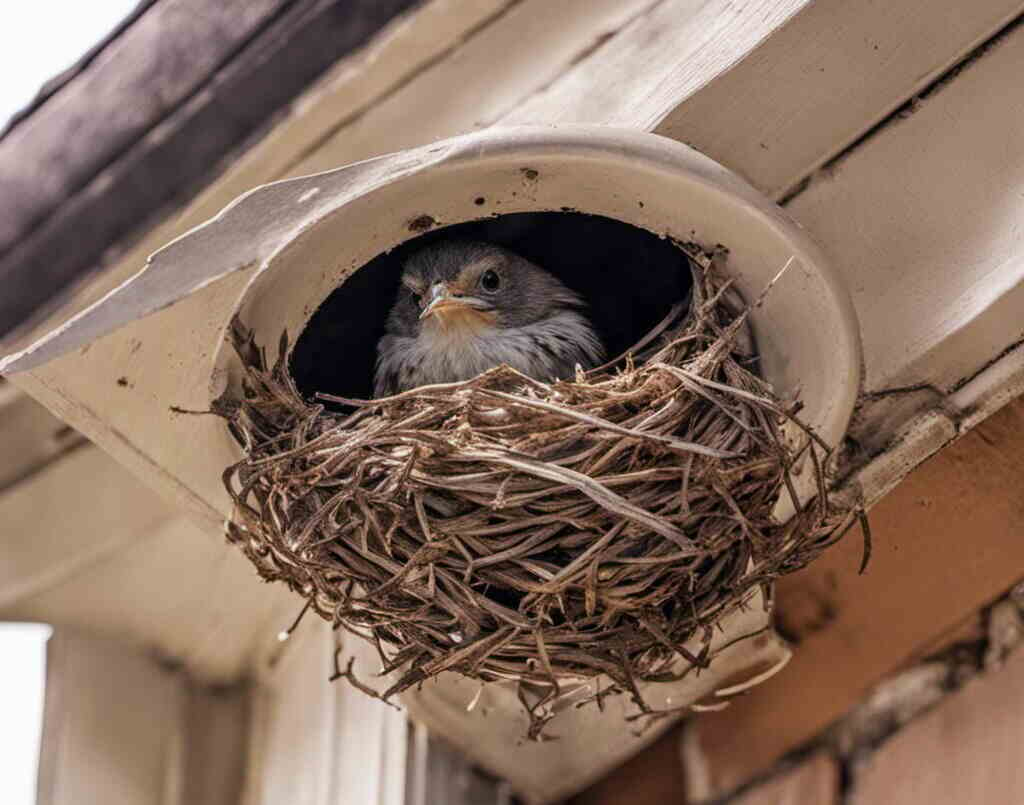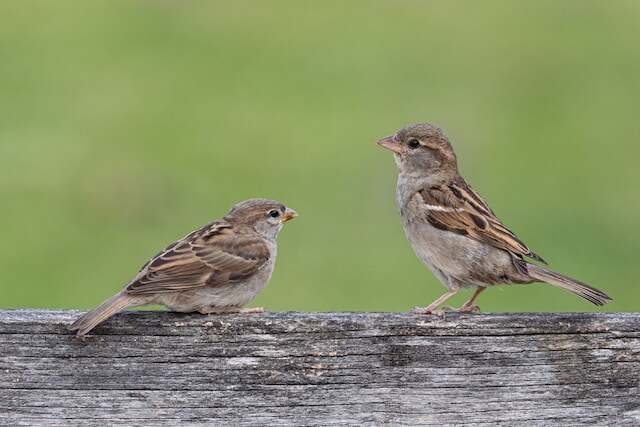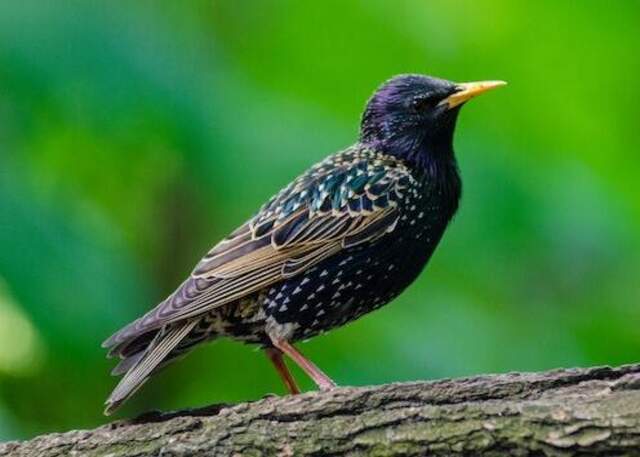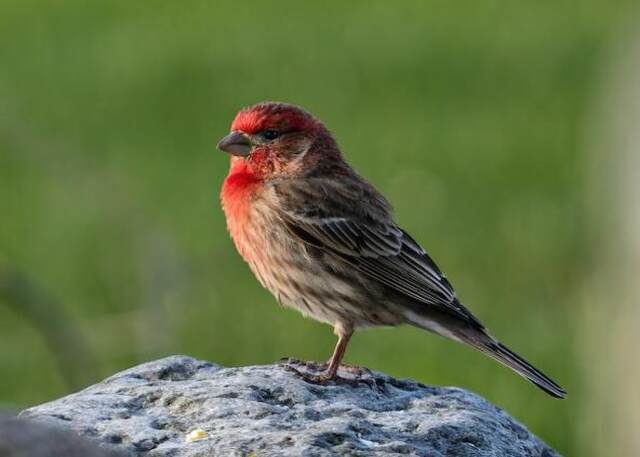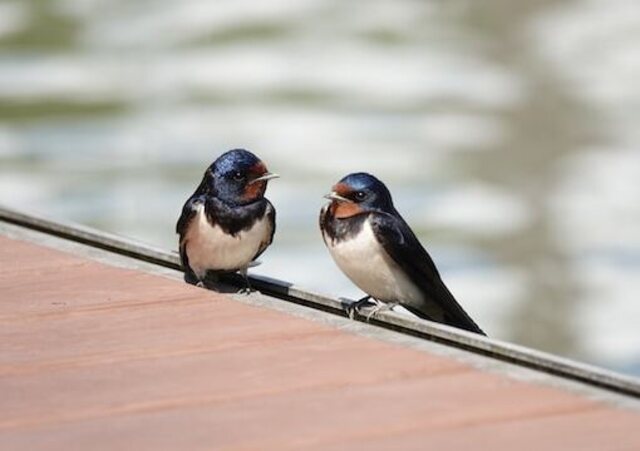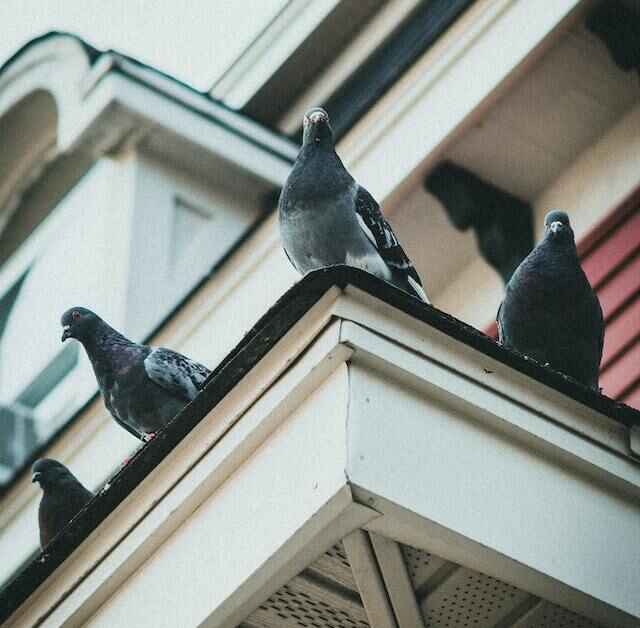Dealing with birds nesting in your vents can be frustrating. Not only can they cause damage to the vents themselves, but their droppings and parasites can also pose a health risk to you and your family. Fortunately, there are safe and effective solutions for removing birds from vents and preventing them from returning.
In this article, we will explore different bird removal techniques, DIY methods for removing birds, and professional bird removal services. We will also discuss bird repellent options and preventative measures to keep birds out of your vents. Additionally, we will provide tips on safely removing bird nests from vents and legal considerations to keep in mind.
Table of Contents
- 1 Key Takeaways:
- 2 How To Get Rid Of Birds In Vents?
- 3 Why Birds Nest in Vents
- 4 Potential Problems Caused by Birds in Vents
- 5 Inspecting Your Vents for Bird Activity
- 6 DIY Methods for Removing Birds from Vents
- 7 Using Bird Repellents for Vents
- 8 Professional Bird Removal Services
- 9 Preventing Birds from Returning to Vents
- 10 Removing Bird Nests from Vents
- 11 Legal Considerations for Bird Removal
- 12 Additional Tips for Bird Control Around Your Home
- 13 Conclusion
- 14 FAQs: How To Get Rid Of Birds In Vents?
- 14.1 How do I get rid of birds in vents?
- 14.2 Why do birds nest in vents?
- 14.3 What problems can birds in vents cause?
- 14.4 How do I inspect my vents for bird activity?
- 14.5 What are some DIY methods for removing birds from vents?
- 14.6 Are there bird repellents specifically for vents?
- 14.7 Should I hire professional bird removal services?
- 14.8 How can I prevent birds from returning to vents?
- 14.9 How do I remove bird nests from vents?
- 14.10 Are there any legal considerations for bird removal?
- 14.11 What are some additional tips for bird control around my home?
- 15 Author
Key Takeaways:
- Birds are attracted to vents due to their shelter, warmth, and accessibility.
- Bird nests in vents can cause damage to the vents and pose health risks.
- Different techniques and methods can be used to remove birds from vents, including DIY methods and professional services.
- Bird repellent options and preventative measures can be used to keep birds from returning to vents.
- Proper cleaning and legal considerations are important to keep in mind when dealing with bird removal.
How To Get Rid Of Birds In Vents?
Birds nesting in vents can cause damage and create a fire hazard. To get rid of birds in vents, start by identifying the entry point and blocking it off with wire mesh or netting.
Next, use a vacuum or broom to remove any nesting materials and debris from the vent. If necessary, you can also use bird repellents such as visual deterrents or sound devices to discourage birds from returning.
It’s important to address bird infestations promptly to prevent further damage and protect the safety of your home. For severe infestations, it may be necessary to consult with a wildlife removal specialist.
Why Birds Nest in Vents
Birds are attracted to vents for a variety of reasons. The shelter and warmth provided by vents make them an ideal location for nesting, especially during the colder months. Additionally, vents provide easy access for birds due to their location on roofs and walls. This makes them an attractive option for bird species looking for a safe and secure place to build their nests.
Furthermore, some bird species prefer the height that vents offer, as it provides them with a clear view of their surroundings and potential threats. Birds also use vents as a place to raise their young, as it provides a secure and safe environment away from predators.
Potential Problems Caused by Birds in Vents
Birds nesting in vents can cause a variety of problems that should be addressed promptly. These issues can range from minor inconveniences to serious health hazards. Here are some of the potential problems that can result from birds in vents:
| Problem | Description |
|---|---|
| Damage to Vents | Birds can damage vents by pecking at the screens or covers to gain access. This can lead to holes or gaps that compromise the integrity of the vent system. |
| Blockage of Airflow | Birds’ nests can obstruct the flow of air in a vent, reducing the efficiency of the system and potentially causing dangerous buildup of gases or fumes. |
| Spread of Disease | Bird droppings and nesting materials can harbor a variety of bacteria, viruses, and parasites that can be harmful to humans. Exposure to these pathogens can cause respiratory issues, skin irritation, and other health problems. |
| Attracting Other Pests | Left unchecked, bird nests can attract other pests such as insects, rodents, or other birds. These pests can exacerbate the problems associated with birds in vents and create additional concerns. |
If you suspect that birds have made a nest in your vent system, it’s important to take action to prevent these problems from occurring. The longer the birds remain in the vents, the more damage they can cause and the harder they can be to remove.
Inspecting Your Vents for Bird Activity
If you suspect that birds may be nesting in your vents, it’s important to inspect them as soon as possible. Here are some tips to help you identify signs of bird activity:
- Listen for bird noises coming from the vents. This could be chirping, scratching, or flapping sounds.
- Look for bird droppings on the outside of the vents, as well as on nearby surfaces like walls or windowsills.
- Check for signs of nesting materials around the vent, such as twigs, leaves, or feathers.
- Inspect the inside of the vent with a flashlight or mirror to see if there are any visible nests or eggs.
- Observe the behavior of birds in the area to see if they are entering or exiting the vent.
If you identify any of these signs, it’s likely that birds are nesting in your vents, and it’s time to take action.
Identifying Bird Nests in Vents
If you suspect that birds have built a nest in your vents, it’s important to identify the type of bird, so you can determine the appropriate course of action. Here are some key characteristics to look for:
| Bird Type | Characteristics |
|---|---|
| Sparrows | Small, round nests made of grass, twigs, and feathers |
| Starlings | Larger, messy nests made of sticks, grass, and trash |
| Pigeons | Flat, bowl-shaped nests made of twigs and leaves |
| Swallows | Mud nests attached to the side of the vent |
Identifying the bird species can help you determine the appropriate removal method. Some species are protected by law, so it’s important to consult with a professional bird removal service before taking action.
DIY Methods for Removing Birds from Vents
If you’re dealing with birds in your vents, there are several DIY methods you can try before calling in professional help. Here are some safe and effective bird removal techniques:
- Use noise deterrents: Loud noises can scare birds away from their nesting sites. Try playing a radio or a recording of predator bird sounds near the vent to discourage nesting.
- Install mesh barriers: Covering your vents with mesh barriers can prevent birds from entering. Be sure to use a fine mesh that won’t allow birds to get through.
- Create obstacles: Birds like to nest in flat, sheltered spaces. By placing objects such as plastic spikes or wire mesh near the vent, you can make it difficult for birds to land and nest.
- Use light deterrents: Birds are less likely to nest in well-lit areas. Try installing a light near the vent or using reflective materials to create a bright, reflective surface.
While these methods can be effective, it’s important to remember to use them safely and humanely. Avoid using harmful chemicals or traps, which can harm both birds and humans.
Using Bird Repellents for Vents
If you’re looking for a non-invasive way to deter birds from nesting in your vents, bird repellents may be the solution for you. There are a variety of bird repellent options available, both commercial and natural, that can effectively discourage birds from nesting in your vents.
Natural Bird Repellents for Vents
Natural bird repellents for vents include scents and materials that birds find unappealing or threatening. Some effective options include:
- Essential oils such as peppermint, eucalyptus, or citrus
- Reflective or shiny materials like aluminum foil or CDs
- Predator decoys such as fake owls or snakes
These options are safe for the environment and won’t harm birds or other wildlife.
Commercial Bird Repellents for Vents
Commercial bird repellents for vents are specifically formulated to deter birds from nesting in vent systems. Some popular options include:
- Gel repellents that emit an unpleasant odor or taste
- Sonic repellents that use sound waves to disrupt bird communication and nesting patterns
- Visual repellents that mimic predators or create a disorienting visual effect
It’s important to note that commercial bird repellents may contain chemicals or other ingredients that may be harmful to the environment or humans. Always follow the instructions carefully and consider the potential risks before using a commercial bird repellent.
When using bird repellents for vents, it’s essential to regularly monitor your vents for any signs of bird activity. Remember that these repellents are not a guaranteed solution and may need to be supplemented with other bird control methods.
Professional Bird Removal Services
If you have tried DIY methods or bird repellents and still have birds nesting in your vents, it may be time to call in the professionals. Professional bird removal services can safely and effectively remove birds and their nests from your vents.
These experts have the necessary tools and experience to remove birds without causing harm to them or damaging your vents. They will also be able to identify and address any underlying issues such as the need for vent repairs or bird-proofing.
When hiring a bird removal service, be sure to choose a reputable company with experience in bird control. Look for reviews or ask for referrals from friends or neighbors who have used bird removal services in the past. Make sure the company uses humane methods and is licensed and insured.
While professional bird removal services may cost more than DIY methods, they offer a safe and effective solution for removing birds from vents and preventing them from returning.
Preventing Birds from Returning to Vents
Preventing birds from returning to vents is an essential step in solving the problem for good. Here are some tips:
- Regular maintenance: Regularly inspecting vents and clearing them of debris can prevent birds from nesting there.
- Protective covers: Installing protective covers over vents can prevent birds from accessing them.
- Creating alternate nesting sites: By providing birds with an alternate nesting site, such as a birdhouse or nesting box, they may be less likely to nest in vents.
Remember to always prioritize humane methods when dealing with birds in vents. Avoid any methods that may cause harm to the birds or damage to the environment. By utilizing these prevention strategies, you can keep your vents bird-free and avoid costly repairs or health risks associated with bird infestations.
Removing Bird Nests from Vents
If you have discovered a bird nest in your home’s vents, it is essential to remove it immediately to prevent further damage and avoid potential health risks. However, it is crucial to do so safely and humanely, as disturbing the nest can provoke aggressive behavior from the birds.
The first step before removing the nest is to identify the bird species to ensure compliance with federal and state laws. Some bird species, such as migratory birds, are protected under the Migratory Bird Treaty Act, and disturbing their nests without permission can result in hefty fines and even imprisonment.
Once you have assessed the legal requirements, the next step is to prepare for the removal process. Wear protective gear, such as gloves and a mask, to avoid exposure to bird droppings and parasites. It is also crucial to turn off the HVAC system to prevent debris and dust from circulating while removing the nest.
After these initial steps, carefully remove the nest by hand, ensuring you avoid damaging the ductwork. Place the nest in a garbage bag and dispose of it properly.
Once the nest is removed, clean the vent thoroughly, both to remove any remaining debris and to eliminate any potential bacteria or parasites left behind by the birds. Use a disinfectant to sanitize the vent and surrounding areas, and replace any damaged parts of the vent, if necessary.
If the nest is too difficult to remove or if you are uncertain about the removal process, it is always best to call a professional bird removal service to handle the situation safely and humanely.
Legal Considerations for Bird Removal
When it comes to removing birds from vents, it is important to be aware of the legal considerations that may apply. In the United States, several federal laws protect birds and their nests, eggs, and feathers. These laws include the Migratory Bird Treaty Act, the Bald and Golden Eagle Protection Act, and the Endangered Species Act.
While removing birds from vents is generally permissible, it is important to avoid hurting or killing any birds in the process. If you are unsure about the legality of removing birds from vents on your property, it is recommended to contact state wildlife agencies or bird control experts for guidance and advice.
In some cases, a permit may be required to remove certain bird species or their nests. Additionally, if bird nests or eggs are discovered during the removal process, it is important to handle them with care. In some states, disturbing active nests or eggs can result in fines or legal penalties.
Overall, it is important to take legal considerations seriously when dealing with birds in vents. By following the proper protocols and seeking professional advice when needed, you can ensure that your bird removal efforts are both effective and legal.
Additional Tips for Bird Control Around Your Home
Here are some additional tips to help control birds around your home:
- Keep garbage cans tightly sealed to prevent birds from accessing food sources.
- Use bird feeders with protective covers to prevent spillage and discourage birds from feeding on the ground.
- Install bird spikes or nets on ledges and roofs to prevent birds from perching or nesting in those areas.
- Invest in ultrasonic bird deterrents, which emit high-frequency sound waves that are unpleasant to birds but inaudible to humans.
- Try using visual deterrents, such as reflective tape or spinning devices, to scare birds away from specific areas.
- Create bird-friendly landscaping by planting vegetation that provides natural food sources for birds, such as fruit trees and berry bushes.
Remember to always use humane methods for bird control, and avoid harming birds whenever possible.
Conclusion
Getting rid of birds in vents can be a challenging task, but it is important to find safe and effective methods to prevent damage to your home and protect your health. Whether you choose to take a DIY approach or hire a professional bird removal service, it is crucial to prioritize humane treatment of the birds and ensure that they are not harmed in the process.
By inspecting your vents regularly, using preventative measures to keep birds from returning, and following the appropriate legal regulations, you can successfully rid your home of unwanted avian guests. Additionally, implementing bird control measures around your property can help to prevent future infestations and maintain a bird-friendly environment.
Remember:
When dealing with birds in vents, it is important to prioritize safety and compassion for both the birds and yourself. By following the tips and techniques discussed in this article, you can effectively and responsibly remove birds from your vents and enjoy a pest-free home.
FAQs: How To Get Rid Of Birds In Vents?
How do I get rid of birds in vents?
There are several methods you can try to safely and effectively remove birds from vents. DIY options include using noise or light deterrents, installing mesh barriers, or creating obstacles to prevent re-entry. You can also hire professional bird removal services for expert assistance.
Why do birds nest in vents?
Birds are attracted to vents because they provide shelter, warmth, and easy access. Vents mimic natural cavities where birds would normally build nests, making them an appealing nesting site.
What problems can birds in vents cause?
Birds nesting in vents can cause several problems. They can damage the vents, block airflow, and create health risks due to droppings and parasites. It’s important to address bird infestations to avoid these issues.
How do I inspect my vents for bird activity?
To inspect your vents for bird activity, look for signs such as nests, feathers, droppings, or chirping sounds. You can also use a flashlight or camera to explore the vent system for any visible nests or blockages.
What are some DIY methods for removing birds from vents?
DIY methods for bird removal from vents include using noise or light deterrents, installing mesh barriers, or creating physical obstacles to prevent re-entry. These methods can help encourage birds to leave and discourage them from returning.
Are there bird repellents specifically for vents?
Yes, there are bird repellents designed for vents. These include natural options such as essential oils or reflective materials, as well as commercial repellents. These repellents work by making the vents less attractive or inaccessible to birds.
Should I hire professional bird removal services?
Hiring professional bird removal services can be beneficial, especially if you’re dealing with a persistent or large infestation. Professionals have the expertise and tools to safely and effectively remove birds from vents and ensure long-term prevention.
How can I prevent birds from returning to vents?
To prevent birds from returning to vents, you can regularly maintain the vents, install protective covers, and create alternate nesting sites. By making your vents less attractive or inaccessible, you can discourage birds from returning.
How do I remove bird nests from vents?
To safely remove bird nests from vents, it’s important to wear protective gear and follow proper cleaning procedures. Carefully remove the nest and dispose of it appropriately. Afterward, clean the vent thoroughly to remove any debris or contaminants.
Are there any legal considerations for bird removal?
Yes, there might be legal considerations when it comes to removing birds from vents. It’s important to understand and comply with local bird protection laws. In some cases, you may need to obtain permits or consult with local authorities.
What are some additional tips for bird control around my home?
To control birds around your home, you can manage food sources, use scare tactics like visual deterrents or predator decoys, and create bird-friendly landscaping away from vents. These measures can help deter birds and encourage them to seek other areas.

